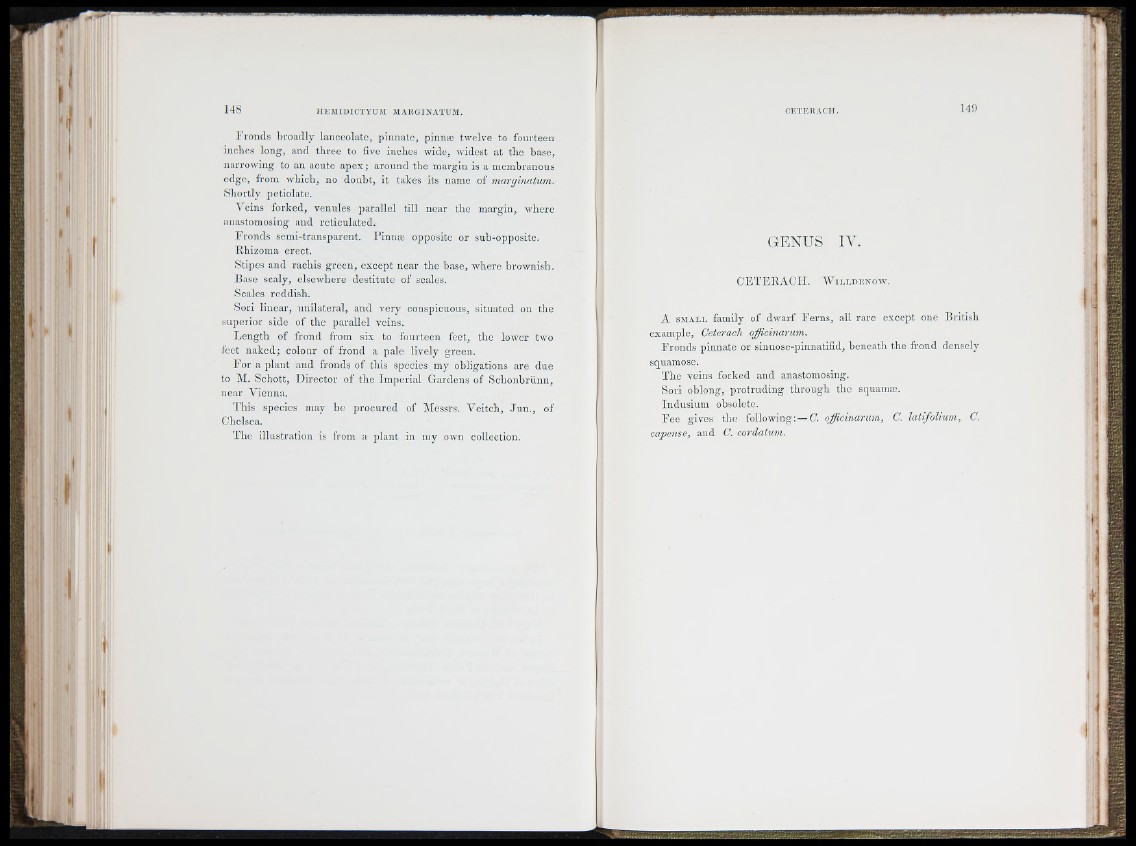
JJ J
I) il I
i
:
I .
148 IIH M IU IC T Y U M M A EO IN A T T JM .
Fronds broadly lanceolate, pinnate, pinnæ twelve to fourteen
inches long, and three to five inches wide, widest at the base,
narrowing to an acute apex; around the margin is a membranous
edge, from which, no doubt, it takes its name of marginatum.
Sliortly petiolate.
ft eins forked, venules parallel till near the margin, where
anastomosing and reticulated.
Fronds semi-transparent. Finnic opposite or sub-opposite.
Rhizoma erect.
Stipes and rachis green, except near the base, where brownish.
Base scaly, elsewhere destitute of scales.
Scales reddish.
Sori linear, unilateral, and very conspicuous, situated on the
superior side of the parallel veins.
Length of frond from six to fourteen feet, the lower two
feet naked; colour of frond a pale lively green.
Lor a plant and fronds of this species my obligations are due
to M. Schott, Director of the Imperial Gardens of Schonbriinn,
near ft'icnna.
This species may be procured of Messrs. ft^eitch, Jun., of
Chelsea.
The illustration is from a plant in my own collection.
C E T E H A C II . 149
GENUS lAft
CLTLRACII. ftViuLDExow.
A SM A L L family of dwarf Ferns, all rare except one British
example, Ceterach officinarum.
Fronds pinnate or sinuose-pinnatifid, beneath the frond densely
squamose.
The veins forked and anastomosing.
Sori oblong, protruding through the squamæ.
Indusium obsolete.
Fee gives the following: — G. officinarum, C. latifolium, C.
capense, aud C. cordatum.
' 1